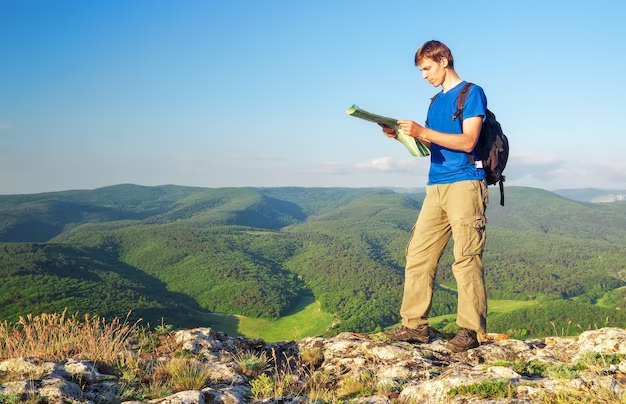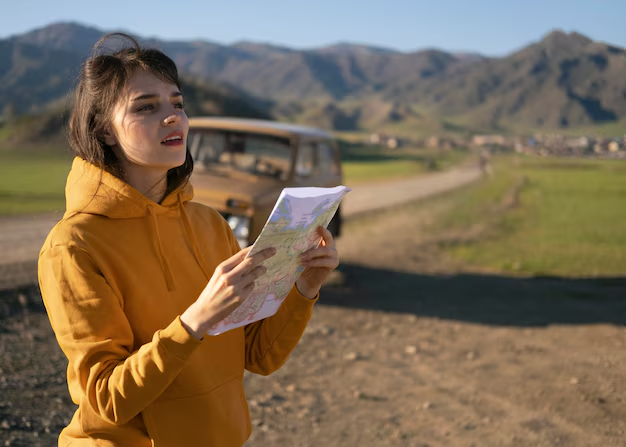Adventure travel is not just a trend—it’s a lifestyle choice for many who seek thrills, new experiences, and the opportunity to explore the world in a more daring way. From trekking through rainforests to climbing mountain peaks, adventure travel encompasses a broad range of activities that allow travelers to step outside their comfort zones. This ultimate guide to adventure travel will give you the insights and tips you need to embark on your next big adventure.
What Is Adventure Travel?
Adventure travel refers to trips that involve exploration or physical activities in a challenging, remote, or unfamiliar environment. Unlike traditional tourism, adventure travel encourages participants to step outside their daily routines, often with a focus on active experiences that require physical effort, mental agility, or both.
Adventure travelers are typically drawn to outdoor experiences such as hiking, cycling, mountaineering, kayaking, scuba diving, and wildlife safaris. These experiences may take place in some of the world’s most exotic and rugged locations, from the Amazon Rainforest to the Himalayan Mountains.
Types of Adventure Travel

Adventure travel comes in many forms, catering to a variety of interests and fitness levels. Here are some of the most popular types of adventure travel:
1. Trekking and Hiking
Trekking is one of the most popular adventure travel activities. It involves walking through rugged terrain to reach a specific destination or just to explore nature. Popular trekking destinations include the Inca Trail in Peru, Everest Base Camp in Nepal, and the Appalachian Trail in the United States. These treks offer a great way to connect with nature and challenge yourself physically.
2. Wildlife Safaris
Wildlife safaris allow travelers to observe and experience wildlife in their natural habitats. From the African savannah to the jungles of Costa Rica, safaris offer opportunities to see incredible animals like elephants, lions, tigers, and exotic birds up close. Safaris can range from luxury experiences to more rugged and remote wilderness excursions.
3. Water-Based Adventures
Adventure travel isn’t just limited to land. Many thrill-seekers are drawn to water-based activities such as kayaking, white-water rafting, surfing, and scuba diving. Whether you’re exploring the Great Barrier Reef or navigating the wild rapids of the Zambezi River, water-based adventures offer both excitement and the chance to explore stunning aquatic environments.
4. Mountain Climbing and Rock Climbing
For those who love a physical challenge, mountain climbing and rock climbing are the ultimate forms of adventure travel. Scaling peaks such as Mount Kilimanjaro in Tanzania or the Matterhorn in Switzerland requires strength, skill, and mental resilience. Beginners can also enjoy rock climbing at indoor climbing gyms or on accessible outdoor routes.
5. Cycling Adventures
Cycling is an increasingly popular form of adventure travel, with travelers riding across countries, mountain ranges, or through scenic routes. Popular biking destinations include the European Alps, the Mekong Delta in Southeast Asia, and the coastal roads of New Zealand. Cycling offers the chance to see a destination at a slower pace, allowing you to take in the views while enjoying physical exercise.
6. Cultural and Historical Exploration
Adventure travel doesn’t always involve physical exertion; it can also include cultural exploration in remote areas. Traveling to ancient ruins, discovering remote villages, and immersing yourself in the traditions and rituals of indigenous cultures offer unique, rewarding experiences. This form of adventure travel connects you with the history and people of a region in a meaningful way.
Planning Your Adventure Travel
Planning for adventure travel requires thoughtful preparation, as it often involves venturing into unfamiliar terrain. Here are some essential tips for planning a successful adventure trip:
1. Research Your Destination
Before booking your adventure, it’s important to research the destination thoroughly. Consider factors such as the level of difficulty, climate, safety, and the best time to visit. If you’re planning to hike or climb, check the terrain and what equipment you’ll need.
2. Choose the Right Adventure
Make sure that the adventure you choose aligns with your interests and fitness level. For example, if you’re new to trekking, don’t attempt a challenging multi-day hike without prior preparation. Likewise, choose water activities or safaris based on your comfort level and skill set.
3. Pack Smart
Packing for an adventure trip requires careful thought. Bring only the essentials—lightweight, durable clothing, suitable footwear, and necessary gear like a camera, sunscreen, and a first-aid kit. Don’t forget travel insurance to cover unexpected emergencies.
4. Stay Safe
Safety should always be your top priority while on an adventure. Follow local guidelines and regulations, especially when engaging in extreme activities like mountain climbing or scuba diving. Make sure you have a guide or expert if necessary, and keep emergency contacts handy.
5. Respect the Environment
Adventure travel often takes you to pristine natural environments. It’s important to leave no trace, respect wildlife, and follow the principle of sustainable travel. Stick to trails, minimize waste, and support conservation efforts whenever possible.
Conclusion
Adventure travel is an enriching way to explore the world, challenge yourself, and create unforgettable memories. Whether you’re trekking through the Andes or diving in crystal-clear waters, there’s a perfect adventure waiting for you. Remember to plan carefully, stay safe, and respect nature to ensure your journey is both exciting and responsible.
FAQs
Q. What is adventure travel?
Adventure travel involves trips that focus on exploration and physical activities, often in remote or challenging environments. It includes activities like hiking, biking, wildlife safaris, mountain climbing, and water-based adventures.
Q. Do I need to be fit to participate in adventure travel?
While some adventure activities require a certain level of fitness, there are options available for all levels. You can choose an adventure based on your current fitness and gradually increase the intensity.
Q. Is it safe to travel for adventure?
Adventure travel can be safe if you plan carefully, follow safety guidelines, and use reputable guides and companies. Always consider the risks involved and be prepared for emergencies.
Q. What are the best adventure travel destinations?
Some of the best destinations for adventure travel include the Swiss Alps for hiking, Africa for safaris, the Canadian Rockies for climbing and biking, and the Great Barrier Reef for diving.
Q. How can I prepare for adventure travel?
To prepare for adventure travel, research your destination, choose activities that match your fitness level, pack smart, and prioritize safety. You should also consider travel insurance and make necessary medical preparations.
